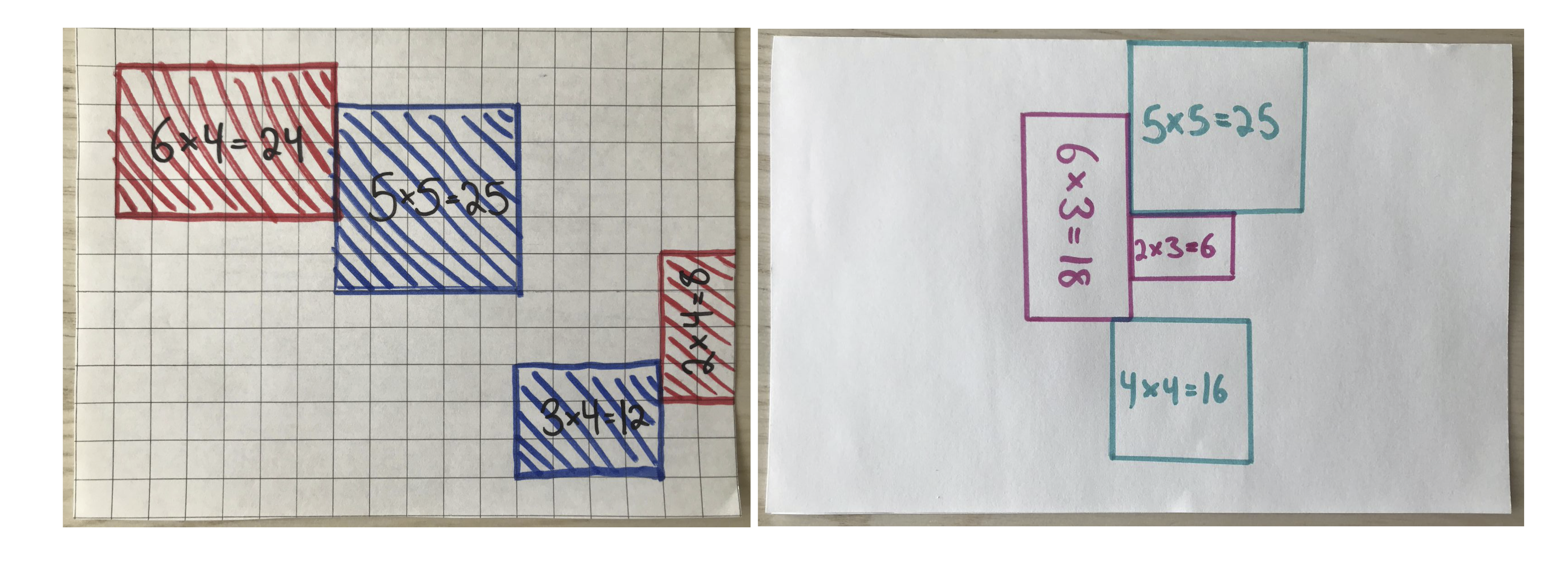Explorations and Games
Learning Goals:
- Build a deeper understanding of the multiplication operation
- Multiply using a variety of strategies (including mental strategies)
- Communicate mathematical thinking orally and visually
Materials:
- Grid paper (see attached page for a printable sheet) OR blank paper
- Dice (see attached page for a foldable homemade dice)
- Two colours of pencil crayon, marker, or crayon
- Scrap paper for calculations
Playing the Game:
This is a game played in partners. Two players share one page. (See one-player version in Adaptations & Extensions below)
The first player rolls two dice (or a single dice twice.) The resulting numbers are used as dimensions to create a rectangle somewhere on the page. (i.e., rolling a 2 and a 3 results in a 2 by 3 rectangle.) Dice and grid paper can be found here.
If grid paper is available:
- record each rectangle on the gridlines
Without grid paper:
- record each rectangle by measuring with a ruler (i.e., rolling a 2 and a 3 would result in a 2 cm by 3 cm rectangle.)
After drawing their rectangle, players must also include a multiplication equation inside. (i.e., a 2 by 3 rectangle would contain the equation “2×3=6”). Play continues back and forth until a player cannot fit their rolled rectangle on the page.
The winner can either be the last player who fit a rectangle on the page
OR
Each player can take some time to calculate the total area of all of their rectangles (by adding) and the winner can be the player with the greatest total area.
OR
The game can be played collaboratively, with the goal of filling as much of the page as possible. Is it possible to fill it completely, with no space left over?
Some rounds of Rectangulation in progress:
Questions and Prompts to Support your Child:
- How did you figure out that product? (when recording equations)
- How could we figure out that product? (if they are unsure of an area)
- Why did you place your rectangle there?
- Is there anywhere that you specifically didn’t want to place it?
Extensions & Adaptations:
- ***If playing without a partner, play can continue with the goal of filling as much of the
page as possible. Creating rectangles in pencil would allow a student playing alone to
create a work of art from the finished gameboard – filling rectangles in with different
colours and patterns once finished the game.*** - If struggling with mental calculations, having some scrap paper can really help
- Try aiming for a “target” total instead of aiming for the greatest total area, where the
winner is the player closest to a specific total area - Try only rolling a single dice and strategically selecting the other number (for more
decision making) - Explore this website for a more competitive version of the game using smaller
gameboards!
Categories: Elementary


